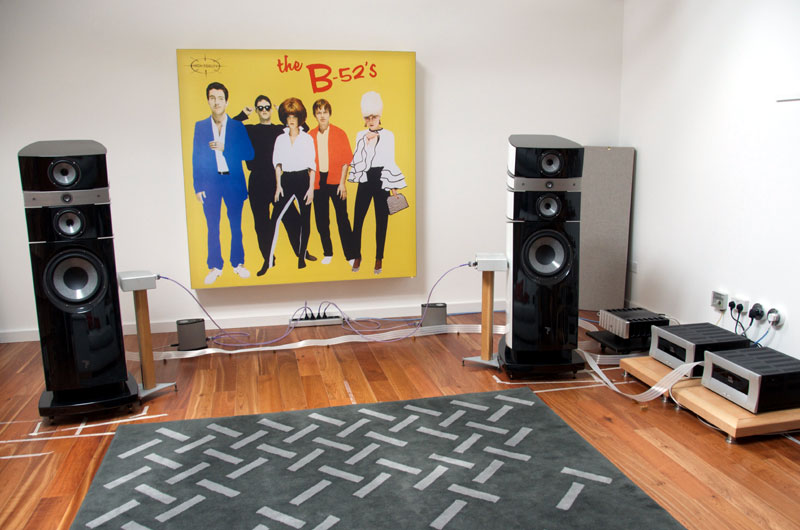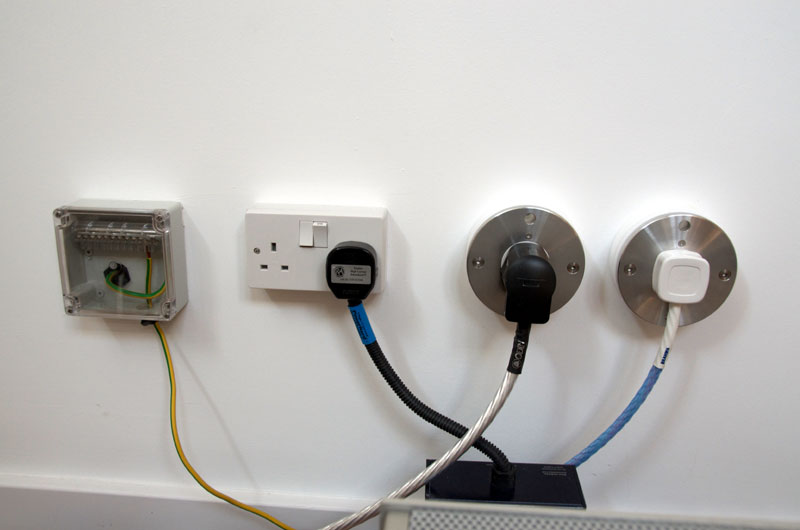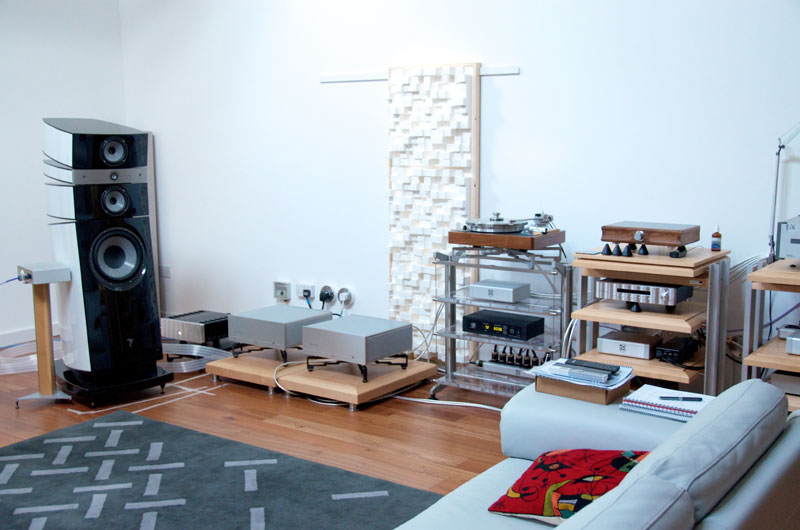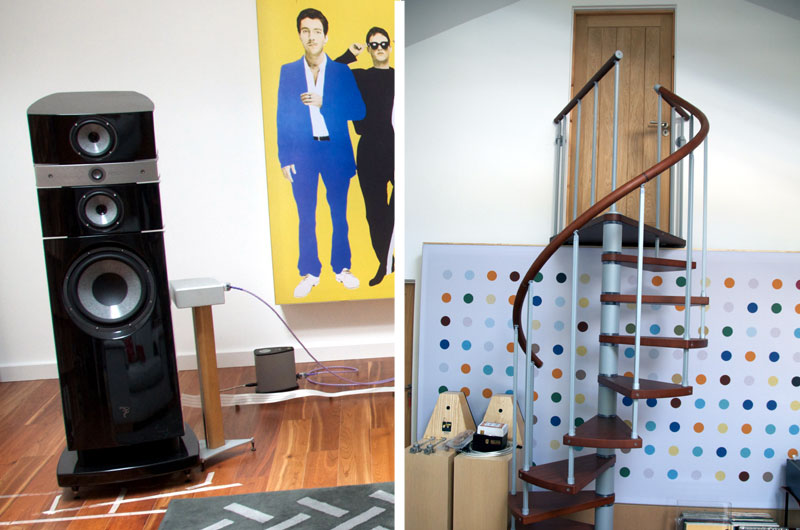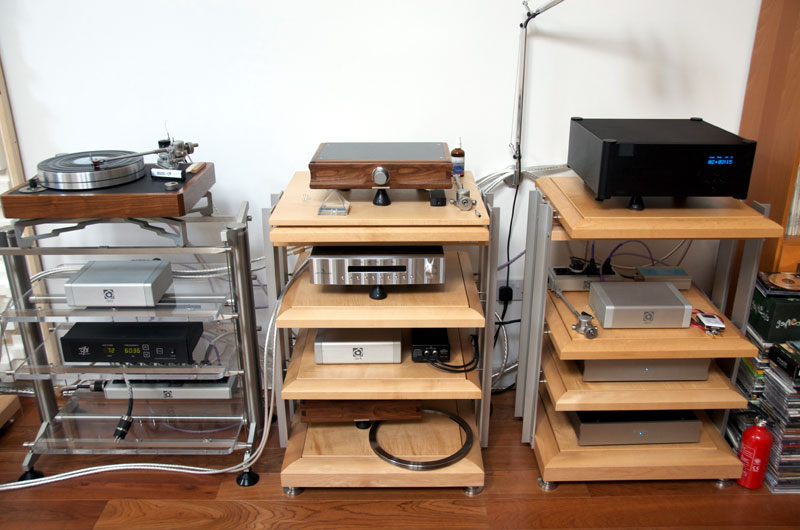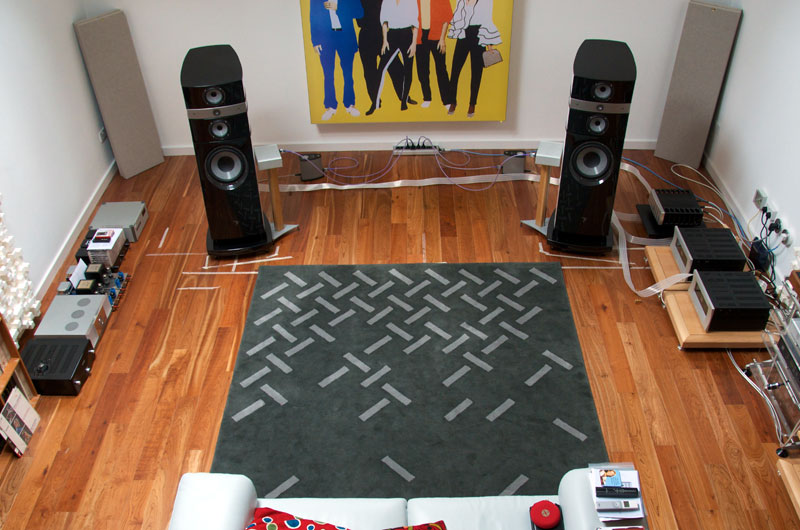Roy's Room
on't get me wrong. I have a perfectly nice listening room with better-than-average acoustics. I don't pine for the way the other half lives -- I live that way too. I've heard quite a few dedicated listening rooms designed to provide the ultimate in music reproduction, but I've seldom found one good enough to make me want to run away from home. So I visited Roy Gregory to experience his bespoke listening room in the countryside environs of Hampshire, UK, with a mixture of anticipation and apprehension. The apprehension evaporated quickly -- but more about that anon. Roy was the founder and editor of the UK’s premier audiophile magazine, Hi-Fi+, and one of the most perceptive and productive hi-fi writers. A quick mind and keen ear are his trademarks. He can effortlessly sort out the sonic issues in a trade-show demo, a skill that has helped him immeasurably in his current role as marketing guru for Nordost. His home is situated on a quiet street with little traffic. What started life as a detached double garage was torn down to the ground, and a new and larger concrete pad was laid out to make as much room available as property boundaries allowed. Roy checked with friends in the industry who had built listening rooms and picked up tips, and he then received advice from a London-based acoustic architect responsible for the design of concert venues, rehearsal rooms and studios. Among other things he was advised that as long as he avoided coincident dimensions, there was no need to slavishly follow any magic ratios in designing the room and could build to his maximum available size. He was also guided to build a live room and add damping after the fact.
The walls of the building are double framed, the interior structure made of high-density concrete blocks with a brick outer wall featuring a 100mm gap filled with insulation. The interior is plaster straight onto the concrete. The room avoids reflective glass surfaces by employing a single window high in the upper corner of the cathedral ceiling. This one window, plus ceiling skylights, keeps the room well lit even on the not-uncommon overcast British day. Access to the room for equipment is via a ramp up from the parking area and through large double doors flush to the building. The back of the room has three doors. One opens to a small office reached by a circular staircase. Another opens to a storage room. The third door opens to the house. It is left open in order to vent bass energy. The room's dimensions are six by eight meters, and the ceiling stretches to five meters at its peak, sloping to three and a half meters at the side walls.
Dedicated power lines that are attached to floating wall plates feed AC to the room. The special decoupled AC outlets, dubbed "The Lens," were designed by Paul Soor, and they are currently distributed by Symmetry Systems in the UK. They are only sold through UK dealers, but US customers may be able to contact Symmetry and acquire them. Be prepared to drop in the range of £400 for each one. The junction boxes employ Teflon-and-alloy housings and use ceramic balls to isolate the outlets and wall plates. There are four distinct, dedicated and unswitched AC lines into the room: one running Nordost Valhalla, one running Chord Company Power Chord, and the other two utilizing high-quality shielded commercial cable. This allows Roy to match the AC supply to the equipment level for reviewing purposes. These outlets are fed from a trunking mounted on the outside of the exterior wall, thus isolating the AC supply from mechanical energy generated in the room. All other circuits (lighting, outlets for the vacuum cleaner, etc.) are connected to the main household supply. The room also has a pair of dedicated clean grounds, accessed through terminal-strip boxes next to the outlets. A separate insulated 6AWG floating ground wire is tied to the ground hubs of two Quantum QBase 8 AC-distribution units. From there, Nordost Odin power cords branch out to the components. The floor is hardwood glued directly to the concrete pad. The lack of underlay eliminates flexing and the resultant rocking of large loudspeakers. First reflections at the side walls are dispersed with RPG Skylines. Three panels each are mounted in two frames, one on each side, and then hung from horizontal battens. The battens act as sliders and allow the panels to be adjusted fore and aft for different speaker sizes and positions. The panels can be edged forward a little at a time to increase the overall dispersive effect, optimizing broad midband evenness and integration of the room sound. Roy credits John Giolas of Wilson Audio for this idea.
A B-52s artwork panel on the front wall disguises nine more RPG Skyline panels. The B-52s image was shot by photographer Simon Marsh and then transferred to a Fabro panel, a commercial artwork/display system available in the UK that prints images on an open-weave fabric and then stretches it across an extruded aluminum framework. Office-interior furnishers and some framing shops catering to large pieces of artwork probably provide a similar process in the US. The 1.9-meter square panel is ideal for LP cover art, and Simon has shot Dexter Gordon and Neil Young replacements for when Roy tires of the B-52s.
The back wall is damped by a similar fabric enclosure. This rear panel consists of an open timber frame spaced from the rear wall. The frame supports two curtains, one in front of the other and each consisting of overlapping strips of thick natural carpet felt. These have battens top and bottom to keep them straight. They hang from hooks and eyelets so that they can be removed if less absorption is called for. The arrangement approximates a pair of heavy theater curtains (a secret weapon much deployed by acousticians) without sacrificing the modern-art theme of the room. Other room treatments include Echo Busters in the rear corners, along with the usual furnishings and record storage. Dominating the room were beautiful Focal Stella Utopia EM speakers. Next to each speaker, and aimed at its magnets, is a Quantum QRT Qx4 on a stand. Careful inspection revealed that these units were not connected with Odin power cords -- no doubt a cost-cutting measure. Amplification was David Berning Quadrature Z monoblocks, a Jeff Rowland 625 stereo amp or VTL MB-450 Series III monoblocks. Ahead of these stood Lyra Connoisseur line and phono stages, or a Rowland Corus line stage. CDs were spun with a Wadia S7i, and vinyl was handled by a VPI Classic turntable fitted with a new Clearaudio da Vinci cartridge. I spent several hours listening to the gear -- swapping out the three amplifiers and switching between the Rowland and Connoisseur line stages. While equipment swaps certainly resulted in changes to the presentation, the consistent excellence of the sound, to my mind, was the direct result of listening within the room’s amazing infrastructure. Of course, there is the space itself, but you must add to that the incomparable electrical system and the extremely inventive approach to diffusion and damping of reflections.
I’ve never heard -- or not heard -- a more neutral room. There is a risk when building something from the ground up that you can never get all of the parts just right; every adjustment seems to put the desired effect one step further away. Designing the electrical system carried little risk -- it’s hard to imagine achieving a better result than running exotic cable from junction box to isolated power boxes. Designing the room could have resulted in disaster -- witness some of the less successful professionally designed concert halls. Yet, by sticking to a live-room plan with good dimensions and allowing for adjustable treatments, Roy seems to have arrived at a space that's pretty close to perfect. The best evidence of this was demonstrated during one night of music played at levels rarely allowed in my home. My wife, who was also listening, had no complaints and hardly noticed the decibel level. That testimony to the clean, unforced sound summed it all up.
I’ve long ago borrowed Roy's ideas on designing the
electrical and grounding for my room, and I’ve already come up with a few ideas for
room reconfiguration. Now it’s on to replacing some of that pesky artwork with RPG
Skylines and shifting the furniture just a tad. "Honey, do we really need that
coffee table?" Well, I guess I can dream. |

